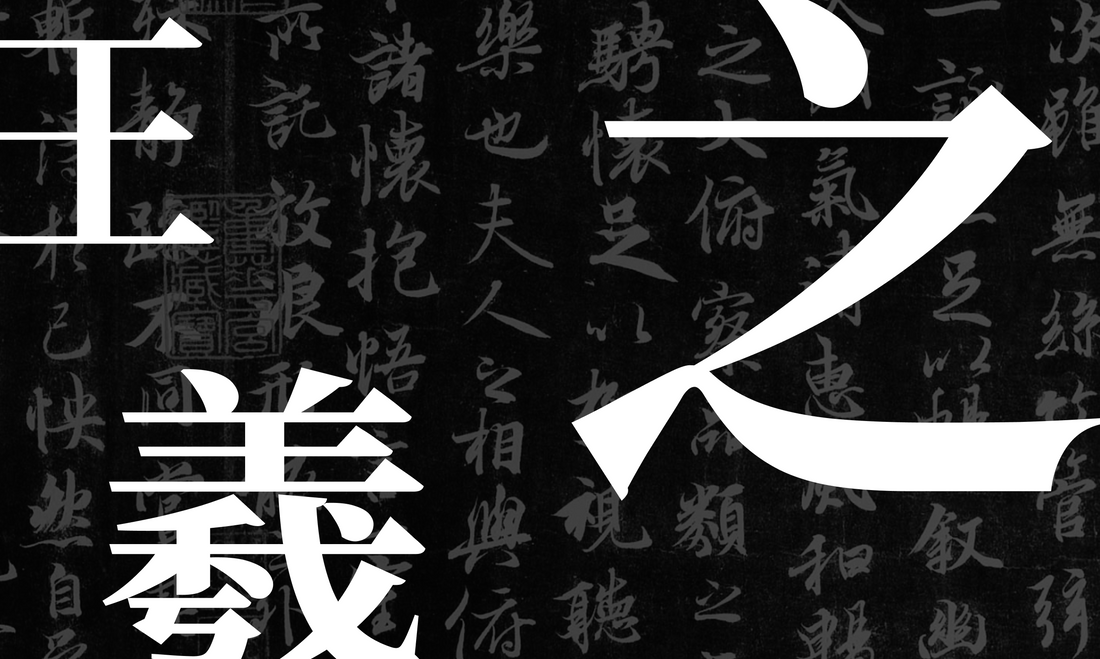
A YOUNG MAN IN TURMOIL AND THE FATE OF HIS FAMILY AND COUNTRY - WANG XIZHI'S EARLY
Author: Yuyue
A Young Man in Turmoil and the Fate of His Family and Country – Wang Xizhi's Early Political Life
Wang Xizhi, a native of Linyi in Luangya, is regarded as one of the most celebrated calligraphers in Chinese history. His renowned works—including the Lanting Preface, Cold Food Stipulation, and Duobao Pagoda Stele—serve as milestones in the development of Chinese calligraphy. These pieces are often grouped as major landmarks of the tradition and offer insight into both the aesthetics of the art form and the historical and cultural backdrops of their creators.
Though known today as a paragon of calligraphy, Wang Xizhi’s accomplishments were shaped by a life marked by political upheaval, familial tension, and personal struggle during the Eastern Jin Dynasty. His evolution as both an artist and an individual was closely tied to the era's turbulence and the fate of his lineage.
Born in the Chaotic World, a Young Man Wandering
Wang Xizhi was born in 303 A.D., during one of China’s most turbulent periods. The sociopolitical unrest that engulfed the country after a series of violent internal power struggles left deep marks on his youth. As dynastic authority crumbled and foreign incursions escalated, Wang Xizhi’s family—once prominent and politically influential in northern China—was compelled to relocate southward, ultimately settling in Jiangnan, then still relatively underdeveloped.
The collapse of the previous dynasty greatly diminished the family’s social status. While Wang Xizhi’s father and uncle had been instrumental in the establishment of the Eastern Jin regime, their political influence waned as instability persisted. For the young Wang Xizhi, this transition meant a loss of former privilege and the need to adapt to an unfamiliar, more modest environment.
Family Heritage and Formative Influences
Wang Xizhi’s maternal lineage was deeply rooted in nobility and long-standing military and political traditions. His grandmother hailed from a distinguished background, with connections to prominent figures of previous dynasties. These familial ties offered a degree of social capital, even as his immediate family experienced decline.
Despite this lineage, Wang Xizhi himself maintained a relatively modest role within the family’s political sphere. His education and values were shaped more by the influence of his mother and grandmother than by his father's political activities. This early environment emphasized cultural refinement and intellectual discipline, laying the foundation for his later artistic achievements.
Wang Xizhi’s distance from direct political engagement allowed him to pursue a quieter, more reflective life focused on artistic and philosophical inquiry. While others in his family engaged in court affairs, he turned inward, dedicating himself to literature and calligraphy. This path led to the cultivation of a unique artistic voice, distinct from the politically entangled lives of his relatives.
A Quiet Path: Wang Xizhi's Early Political Career
Although he held government positions, Wang Xizhi’s involvement in politics remained peripheral. He began in minor roles and eventually attained higher titles, but his interest remained rooted in scholarly pursuits rather than power. His detachment from court politics allowed for a more independent intellectual and creative life.
At times, he faced friction with influential figures of his day, which further alienated him from political centers. These experiences contributed to his growing preference for personal reflection and creative expression over public life. While his background could have afforded him a more ambitious career, Wang Xizhi chose a more contemplative route, deepening his commitment to artistic pursuits.

Next: Drunken Ink at the Lanting and Contemplation of Life — Wang Xizhi's Late Life and the Legacy of the Lanting Preface
Retirement from Calligraphy, Immersion in the Lanting
In his later years, Wang Xizhi gradually withdrew from public service. He found greater fulfillment in the company of fellow scholars and in moments of artistic creation. A notable event in 353 A.D. marked this transition—a poetic and philosophical gathering at a scenic mountain retreat known as the Lanting Pavilion. The event brought together over forty literati and culminated in Wang Xizhi composing a now-famous calligraphic text.
This composition, later known as the Lanting Preface, is celebrated not only for its technical brilliance but also for its introspective meditation on the ephemeral nature of life. The work, consisting of a few hundred characters in flowing script, remains a quintessential piece of Chinese calligraphy, renowned for both its aesthetic harmony and its philosophical depth.
The Question of Authenticity
While the original version of the Lanting Preface no longer survives, historical copies—especially those made during later dynasties—preserve its form and essence. Some believe these copies accurately convey Wang Xizhi’s original intent and style, while others view them as embellished reconstructions.
Despite ongoing scholarly debates, the Lanting Preface has assumed an iconic place in the canon of Chinese art. Its enduring legacy transcends questions of authorship, standing as a cultural touchstone and a symbol of artistic excellence.
Health and Folk Remedies in His Later Years
As Wang Xizhi aged, his health declined due to the demands of his craft and lifestyle habits. In search of rejuvenation, he turned to traditional remedies, some of which had harmful effects. These health challenges were compounded by his exclusion from influential political circles, despite his cultural reputation.
Even as he faced these setbacks, Wang Xizhi found companionship among other scholars who admired his work. These intellectual bonds offered comfort in his final years and reinforced his commitment to his artistic ideals.
Wang Xizhi’s Death and Cultural Legacy
Wang Xizhi passed away in 361 A.D. at the age of fifty-nine. Though his life was marked by hardship, isolation, and limited political influence, his artistic legacy is enduring. The Lanting Preface continues to be celebrated as a masterpiece, and his contributions to Chinese calligraphy remain foundational.
His life story is a testament to the power of artistic vision in the face of historical adversity. In choosing introspection over ambition and art over power, Wang Xizhi not only defined an era of calligraphy but also became a lasting symbol of cultural depth and human expression.
